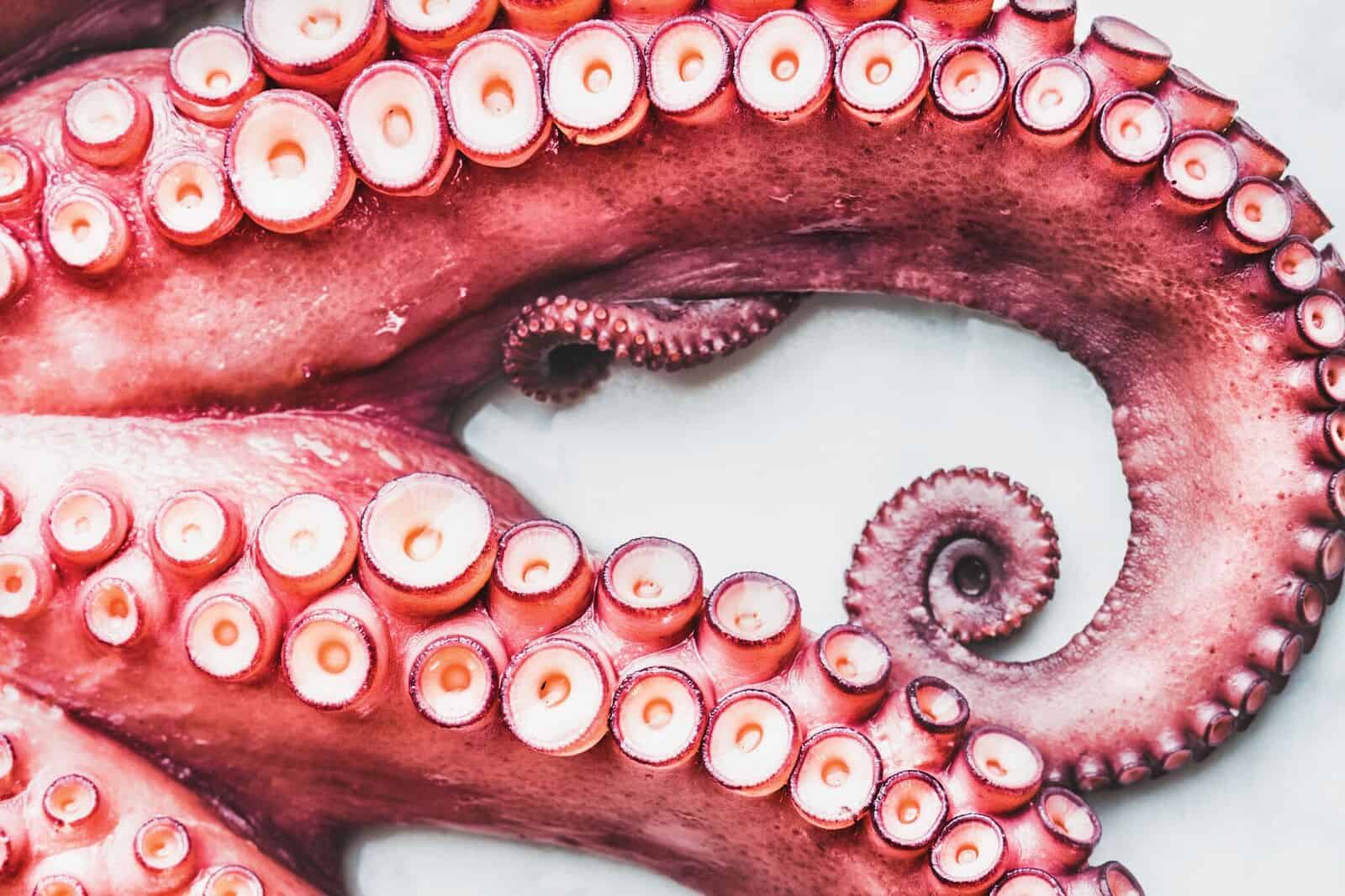
Back in 1999, when octopus rarely strayed from Mediterranean restaurant or sushi bar kitchens, food writer Mark Bittman eagerly anticipated its ascension to the mainstream. “No need to be tentative with tentacles,” he argued in The New York Times. Nearly 20 years later, the cephalopod is a fixture on upscale and trendy restaurant menus around the country—and for good reason. “It’s so flavorful, and so versatile. It can be very feminine, and it can be very strong,” says chef Markus Glocker of New York’s Bâtard restaurant. “It’s a great vehicle for showcasing the chef’s technique.”
The hearty yet low-in-fat seafood also boasts a unique texture that varies significantly depending on preparation, as well as a meatiness that appeals to those wary of “fishy” creatures of the sea. Its striking appearance is another draw for chefs, diners, and Instagrammers alike. “The idea of the tentacles, this kind of alien shape on the plate…it’s quite captivating,” says Alessandro Grano, head chef at London’s La Fromagerie.
Still, the concept of combining the mollusk with cheese remains taboo, eliciting consternation from some. “I’ve never heard of it. It’s like two different worlds to me,” says New York-based Spanish chef Jaume Guerra. “I would never mix octopus with cheese.” Michele Buster, co-founder of importer Forever Cheese, echoes the sentiment: “I honestly can’t think of any instance that I would wish to include cheese with octopus.”
But it’s not unprecedented. In the Puglia region of Italy, bruschetta topped with stracciatella, grilled octopus, and julienned celery is quite typical, as is a panino with the same combination minus the celery, according to cheesemaker Vito Dicecca of Caseificio Dicecca in Altamura. Milan’s Pescaria restaurant serves a burger-style sandwich with fried octopus, chicory, ricotta, and fig jam that Dicecca describes as “optimal.” And online, Spanish recipes for pulpo con queso abound.
While there are no hard-and-fast rules for pairing octopus with curds, simple dishes will prevent the mollusk from being overpowered by other ingredients. The ideas below are meant to serve as a jumping-off point for curious and creative cheese lovers.
Octopus Salad
Refreshing and satisfying, octopus salad is perhaps the most ubiquitous way of preparing the seafood. Boiled with aromatics and a drizzle of olive oil, the octopus is then chopped and tossed with olive oil, lemon juice, herbs, capers, and sometimes cooked potatoes. Grano suggests pairing it with a lemony, not-too-salty feta or fresh goat cheese for a vibrant twist on a traditional niçoise salad.
Recommended Pairings
Hidden Springs Creamery Farmstead Feta + octopus salad
Vermont Creamery Crumbled Goat Cheese + octopus salad
Red Wine-Braised Octopus
Italians describe the octopus in this rustic preparation as affogato, or drowned, in red wine. The result is a rich, complex, and deeply flavored dish. Luxembourg-based private chef Leonardo De Paoli recommends topping the braised octopus with shavings of Ubriacone, a cheese that is similarly bathed in vino. “The cheese is the median between the wine and the fish, mellowing out the complexity of the sauce,” De Paoli says. Grano offers an alternative route: Dust the tentacles with a fruity blue such as Fourme d’Ambert, breadcrumbs, and parsley, then finish in the oven like a gratin to crisp it all up
Recommended Pairings
Moro Formaggi Ubriacone + red wine-braised octopus
Fourme d’Ambert PDO + red wine-braised octopus
Grilled Octopus
Grilling octopus after boiling imparts an intense, smoky flavor and a firm texture. Transport yourself to Mykonos and pair it with warm halloumi, tomatoes, fresh oregano, and olives. Soft and creamy burrata also works well to balance the seafood’s meaty char.
Recommended Pairings
Sapori dell’Antica Murgia Burrata + grilled octopus
A.P. Polycarpou and Sons Farm Halloumi + grilled octopus
Photography by Torresigner/iStockphoto.com




